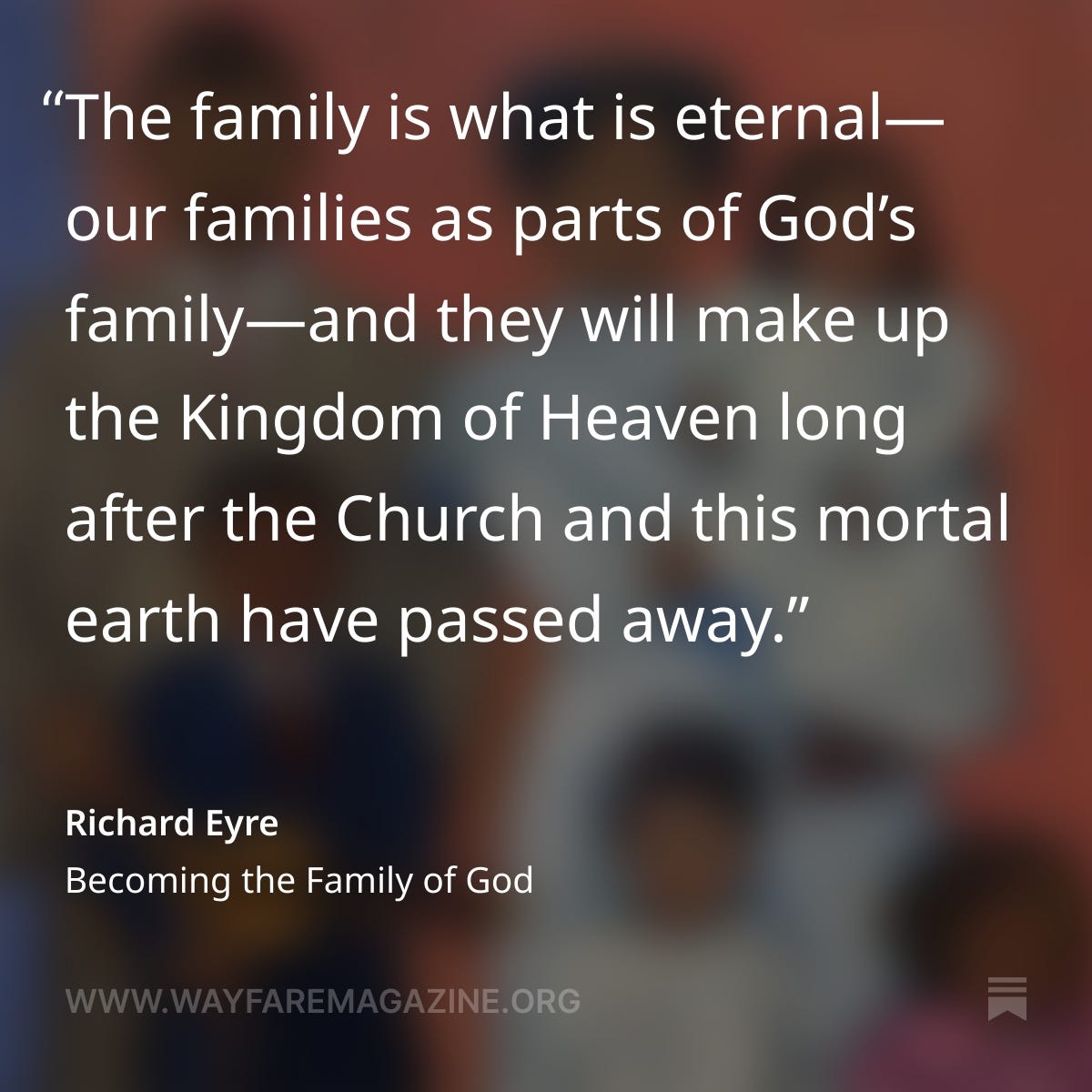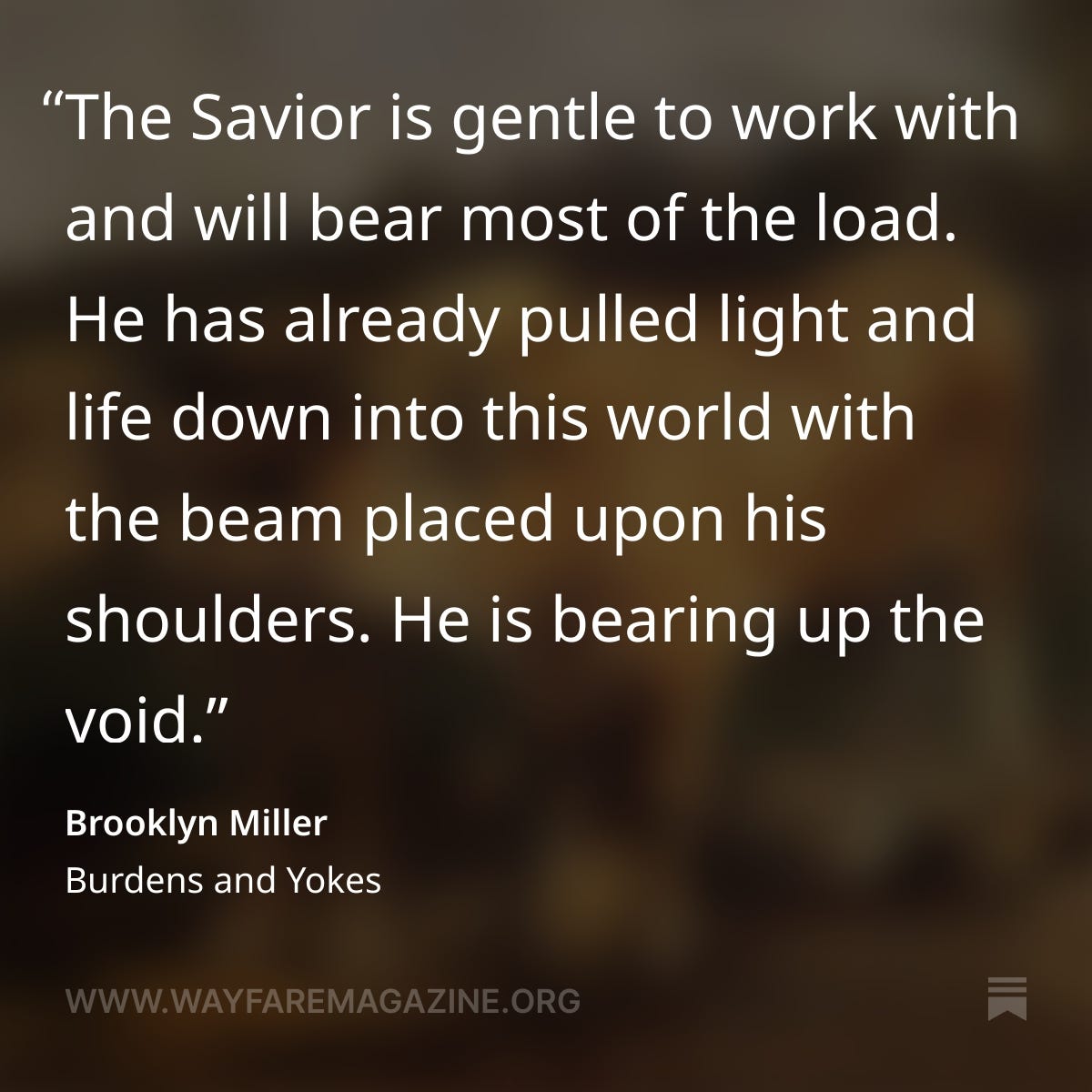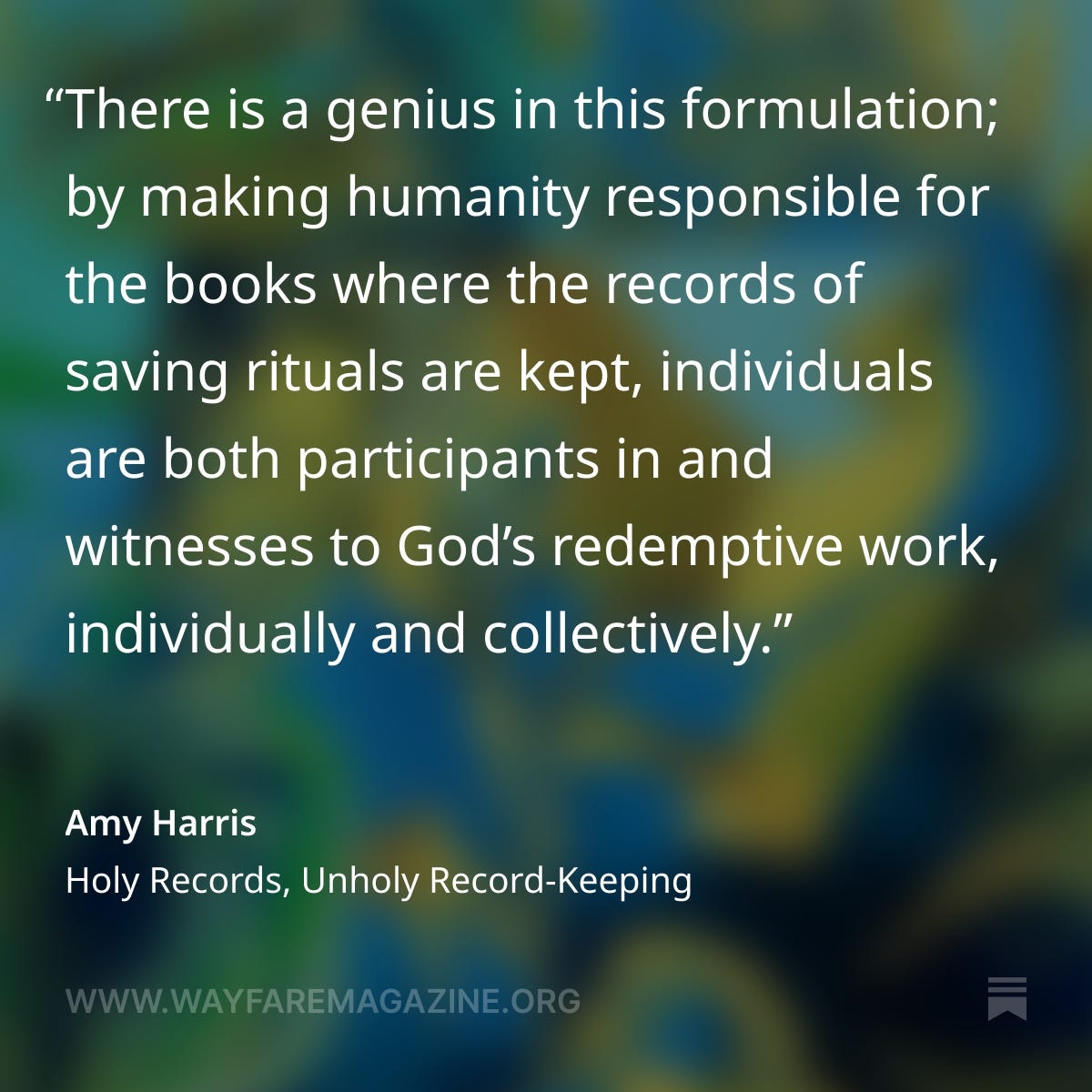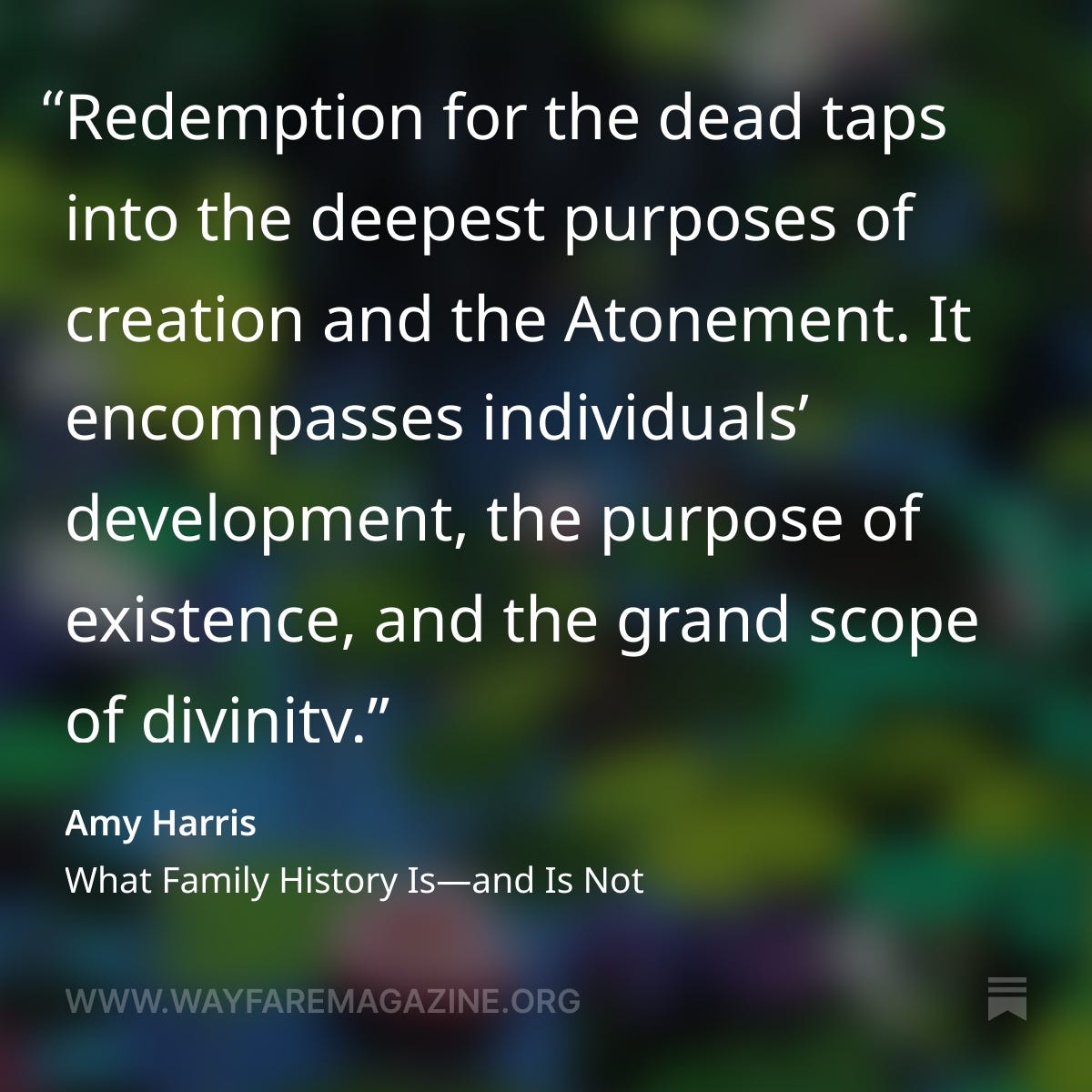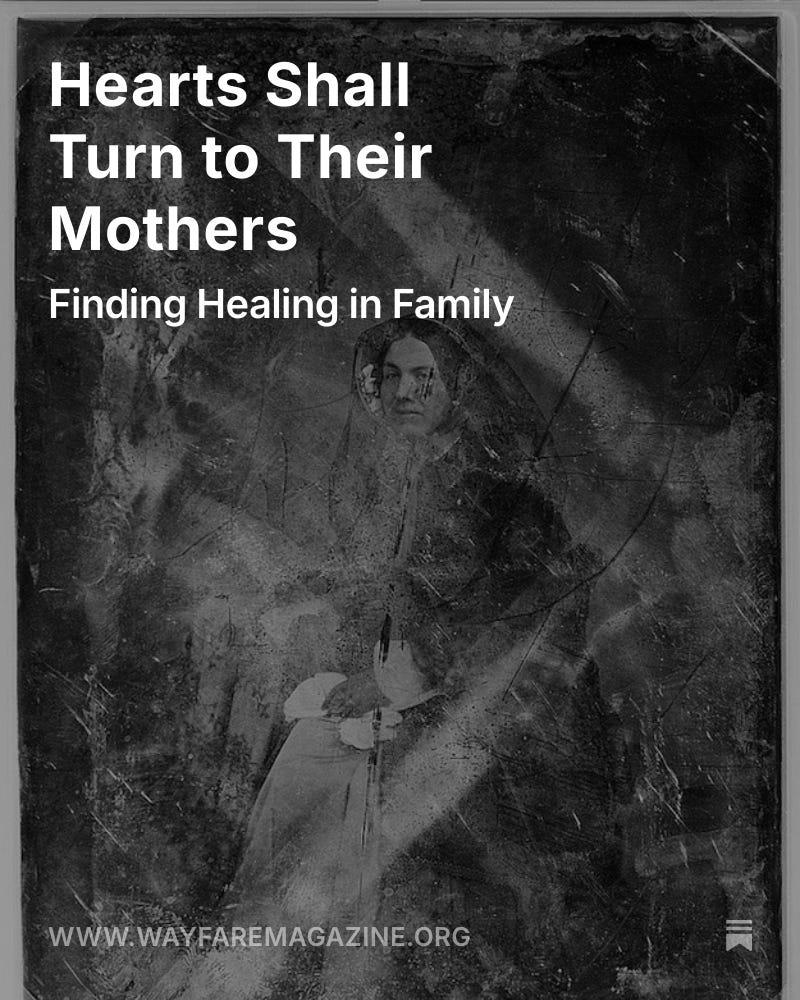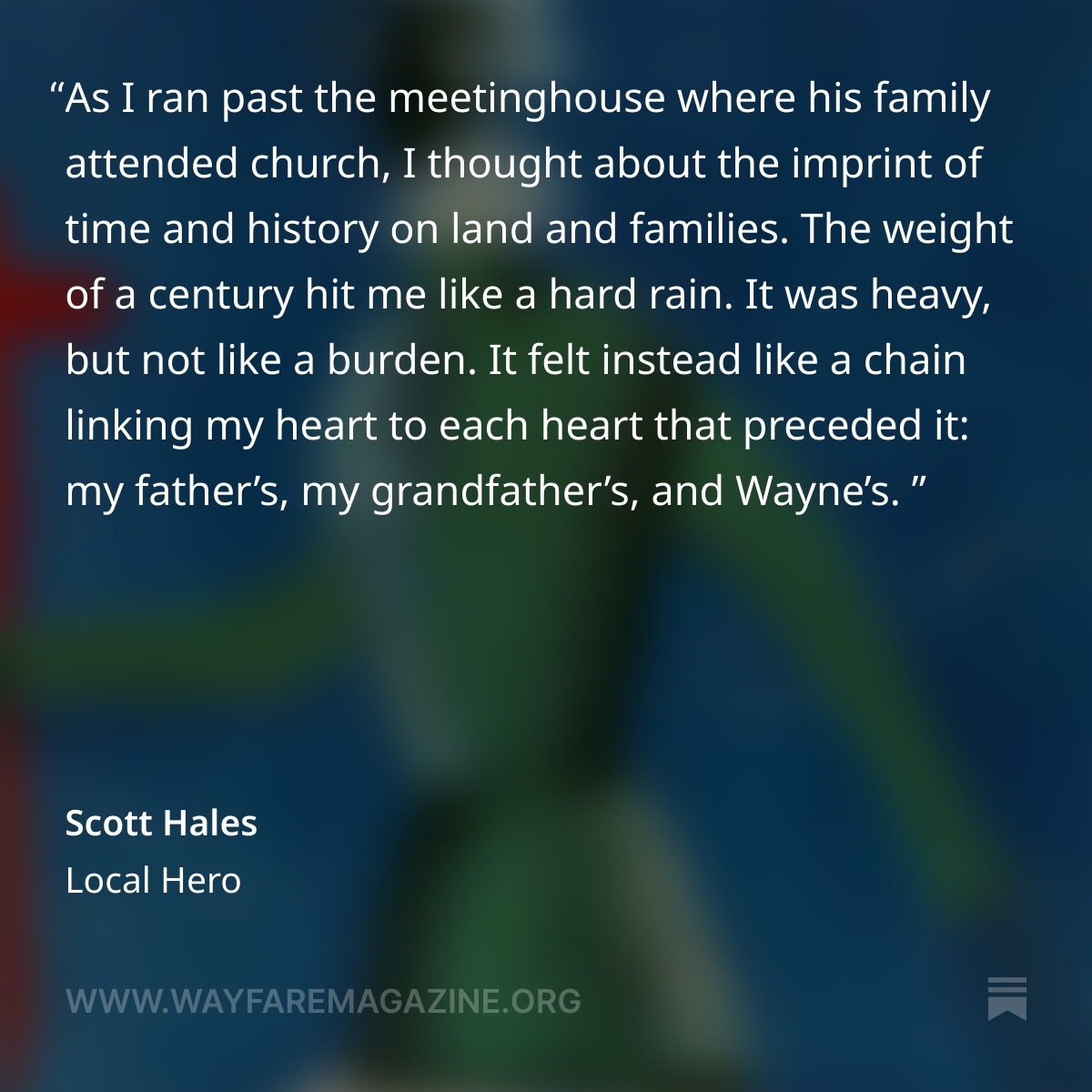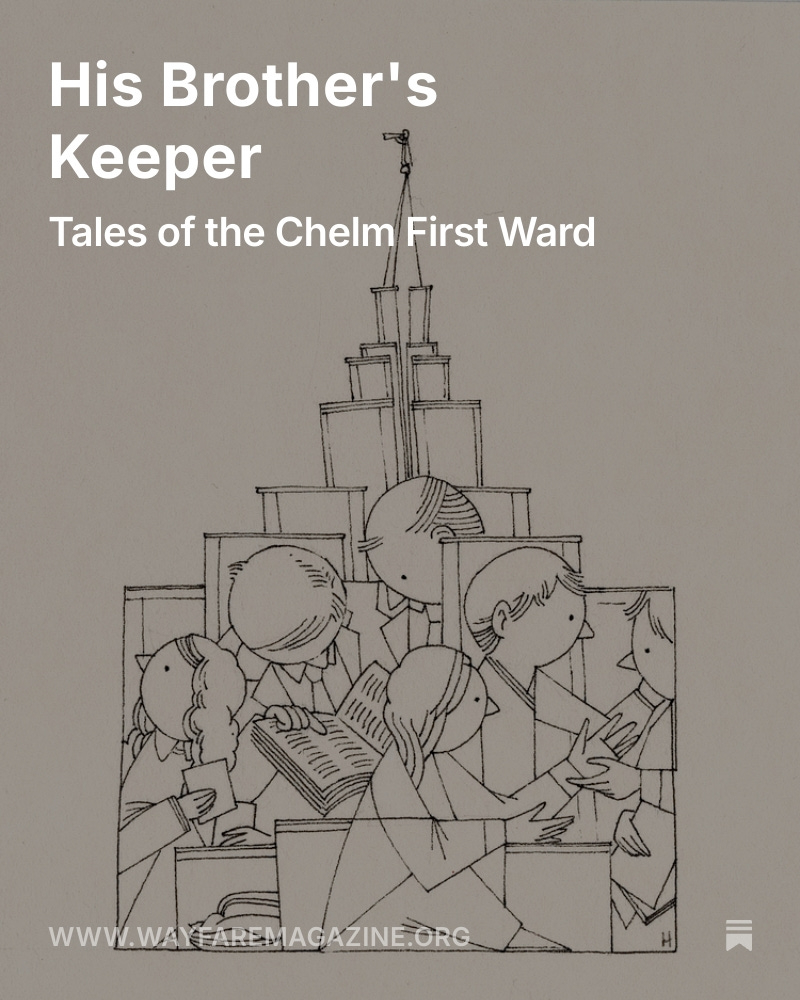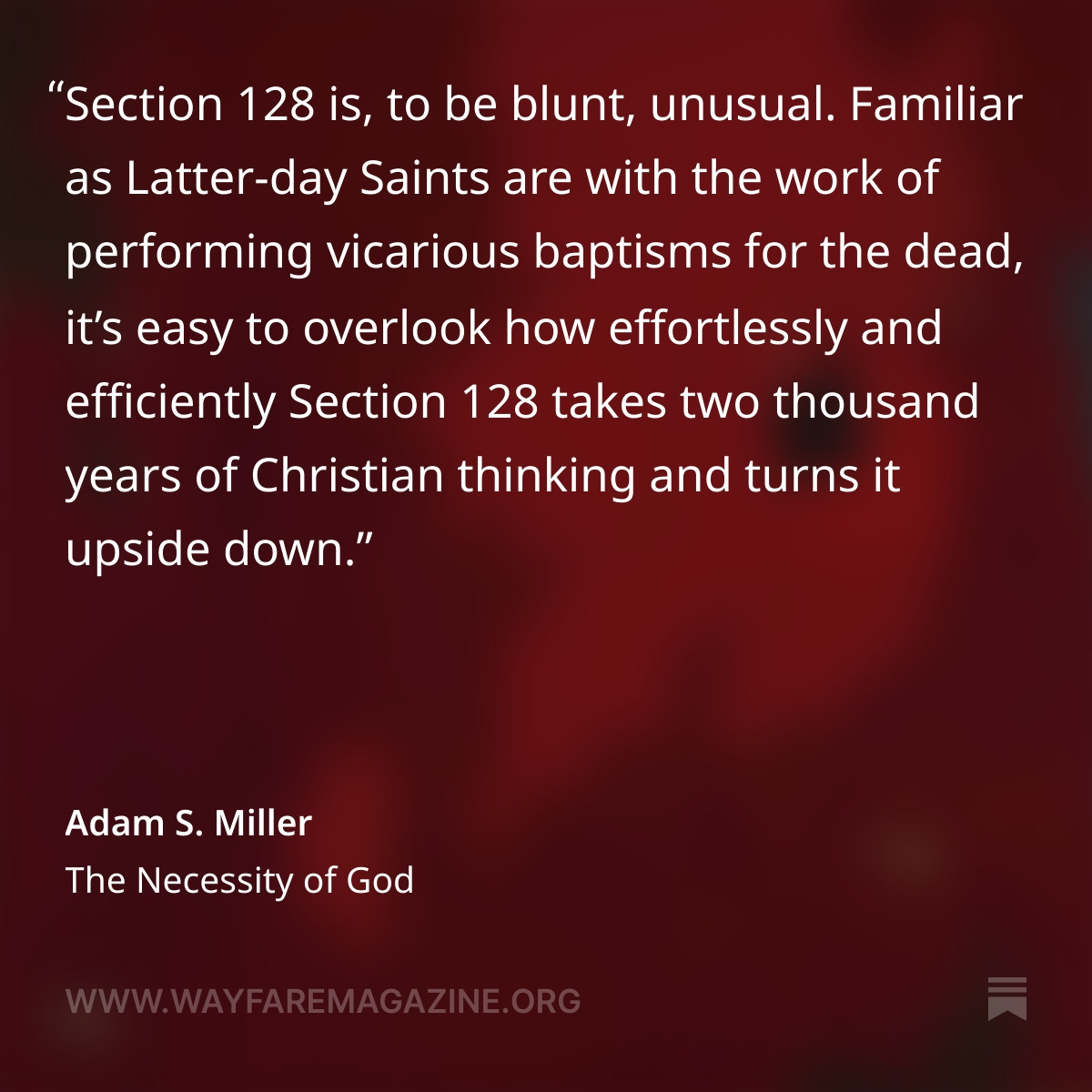What does it mean to redeem the dead?
Faith Matters resources to accompany your Come Follow Me study: November 3-9

The Lord wants me to care for my family.
Learning how big and beautiful and shared the world is, I try to share myself and my family more—to open myself to receive the grace God has to offer me. During sacrament meeting, I no longer try to contain my children to our pew (except during the sacrament itself). I let my baby wander the aisles. She shares her Cheerios and steals applesauce pouches and sits on the lap of a childless man in our ward. I tell my son, we are Heavenly Father’s and Heavenly Mother’s children, so we are all family. We can trust our family to help take care of our baby. We can trust our family to take care of us.
—Lindsey Meservey, “‘All Things Common’ Among the Courtyard”
We are blessed in our faith tradition to have an understanding of families that spreads so much farther and goes so much deeper than just the nuclear family unit. We believe in a family that can be sealed together for eternity, through countless generations, from child to parent to grandparent. It’s a family unit that is just as important and serves just as many purposes as the modern nuclear family. The branches of this eternal family tree spread wide enough to encompass siblings and cousins and aunts and uncles. Even when loved ones have passed from this life, we have the power to graft them onto our living tree through posthumous temple work. And, if you dig down far enough, you’d find that we all spring from the same roots. You. Me. Your neighbor. A stranger on the other side of the planet. Across distance and time, we share both the same heavenly parents and the same physical ancestors. We call each other “brother” and “sister” for good reason.
—Jeanine Bee, “Hymn of the Alloparent”
I can rely on the Lord during difficult times.
“Whatsoever you record on earth shall be recorded in heaven.”
In doing temple work, it may seem that our efforts are one-sided. Those with power are often those with records. The powerless often lack paper trails. We have records for the victors and those who were privileged enough to be buried in marked graves, while the slaves, the poor, and those who never bore children often had no one to record their names. Surely that’s unjust. And in linking the human family through temple work, we run up against these incriminating realities.
Given this historical void, we could understandably give up on the temple project. But we’re a stubborn people. My hunch is that someday, when science catches up to the spirit of the temple project, we will be able to read our family records not just from birth certificates, marriage records, and tombstones, but from our bodies’ own genetic code.
And whether we learn about our family in this way or another, there’s more to the project than linking names and checking off ordinances. We’re linking souls. We’re welding hearts from both sides of the veil and both sides of painful conflicts. In this effort, my overarching desire is in gathering the entire human family home to each other and to God.
That’s the fundamental work.
—Hannah Packard Crowther, “Redeeming” from Gracing
Such sacred record-keeping also has the potential to correct today’s commercialization and commodification of bodies and souls. Record-keeping becomes a way of capturing a lived, embodied sacred moment and relationship that transcends the constraints of time. Before any text or record is produced, a ritual is experienced—like Jane Neyman in September 1840, striding into the cool Mississippi River while it rippled around her skirts, her friend Vienna Jaques, witnessing from atop a horse, feeling the warmth of the animal breathing in the autumn air. A man, Harvey Olmstead, performing the baptism bracketed by the two women as he prepares to say the holy words. All three, inspired by Joseph Smith’s first sermon on baptisms for the dead a few weeks before. All three brought together in an embodied, lived experience that bound them to each other and to Cyrus, Jane’s deceased son for whom she was being baptized. The record of that event, made some fourteen years later, culminated the sacred moment and expanded it through time to include those who would experience it vicariously by reading.
But human record-keeping untethered from its sacred purpose is limited, even destructive at times.
—Amy Harris, “Holy Records, Unholy Record-Keeping”
Joseph’s litany of homely place names, his insistence that the voice of God could indeed be heard on the banks of an ordinary American river or in the chamber of a common farmer, gives his message an audacity and a power that cannot be ignored. For me Joseph Smith’s witness that the divine can strike through the immediate is more important than any of the particulars enshrined in the church he established. If other people want to reduce D&C 128 to a data processing program for handling family group sheets, that’s fine. I am far more interested in that “whole and complete and perfect union, and welding together of dispensations” that Joseph wrote about.
—Laurel Thatcher Ulrich, “Lusterware”
The salvation of my ancestors is essential to my salvation.
I have little clarity on what the whole temple experience means or what realities it brings about. But there is something powerful in the idea that remembering our dead—their suffering, their grief, their sin, their pain, their hopes, their missed opportunities—is in some way redemptive when we seek to make right what was wrong. …
Remembering and redeeming the dead reminds us that the Atonement of Jesus applies not just to abstract everybodies, but to specific neighbors, coworkers, and family members that irk and harm us—Kathy from accounting, Greg who lives around the corner, or even Beulah. In doing work for a specific person on an actual temple card, I am reminded of the much bigger universal family of which I’m a part and in which I’m immersed—for better or worse. In doing the temple work for Beulah, I’m reminded of the healing work in which I should be engaged here and now. …
The work of remembering our dead reminds me that salvation isn’t just an individual matter. Healing and redemption do not occur in isolation, but in collaboration—amid one giant, universal family. …
For me, the temple points to something bigger and grander than it’s often given credit for. It’s not just my nuclear family that can be exalted for eternity; it’s the whole human family. And it’s not just a ticket into heaven; it’s the healing, redemption, and making right of all that is wrong in the human family—all of creation. It requires remembering all that went wrong and enacting ways to make it right. It involves immersing ourselves in the power of the divine, as well as in the reality of humanity, infused with deep time and ridiculously drawn-out patience.
—Hannah Packard Crowther, “Redeeming” from Gracing
For me, it is the revelation on baptism for the dead that brings the restored gospel’s brashest claims into focus. Joseph taught that humans can act as divine agents for our dead, as vicarious saviors. We raise the scaffolding of heaven here and now, welding it as best we can with our weak bodies in the waters of baptism and our slender pens in the record books. Jesus prayed that his Father’s will be done on earth as it is in heaven. Much of Christian theology has received this saying to mean that earth life is a faint, fallen trace of heavenly life. Latter-day Saint ordinances flip the script. Our temple theology requires that the power of godliness be manifest, counterintuitively, in heaven as it is on earth.2 Earth is the template for heaven; life here, at low altitude, is the foundation of life there. But if heaven is here, then it’s all low altitude. “It may seem to some to be a very bold doctrine that we talk of—a power which records or binds on earth and binds in heaven” (D&C 128:9).
Bold doctrine, perhaps, or depressing. What is human society, what is the natural world, to presume to play host to heaven? Who are we-—poor, bare, forked animals, birthed between feces and urine—to act as saviors on behalf of our dead, to claim that our holy performance frames the foundations of paradise? Is that kingdom of heaven worth seeking? Is low-elevation eternity worth launching?
“This is a faithful saying. Who can hear it?”
—Rosalynde Welch, “Airborne at Low Elevation”
“A Glorious and Wonderful Provision.”
I first experienced the universal, all-inclusive potential of our temple worship a few years ago when I was one of the Latter-day Saint college students selected to participate in the Amos C. Brown fellowship program in Ghana. The Church partnered with the NAACP to make the trip in an attempt to build bridges of understanding, open lines of communication between people at all levels of the two organizations, and reckon with America’s legacy of racism and discrimination. Predictably, it was impossible to be in that space without pointed and valid questions about our church’s own history of racism and discrimination; there were many hard conversations as we joined with our college-age peers in the NAACP in trying to reckon with the trip’s vexing and complicated context.
Our itinerary didn’t make the experience any easier: on the second-to-last day of the trip we visited one of the slave castles in Cape Coast. The whitewashed walls shone in the sun, but the rusting cannon facing seaward spoke to the fort’s original purpose. Down in the bowels of the structure, below ground level and with only one remote window for light, we saw the pits where up to a thousand people at a time were kept in suffocating conditions for weeks before being loaded onto slave ships. It was explained to us that slavers sought to eradicate all traces of individual identity—whether relational, tribal, or cultural—by separating newly enslaved people from their families and treating them worse than animals. Since my dad came to the US from Rwanda and I don’t have enslaved ancestors, I wasn’t mentally prepared for the visceral, awful discomfort that enshrouded me. The intense darkness of the place far surpassed the physical dimness of the dungeon: it was the closest thing to pure evil I think I’ve experienced. I felt depressed, broken, and exhausted.
The next day, our last in Ghana, our schedule was open in the morning, and the Latter-day Saint students had the opportunity to go to the Accra temple for a few hours. As we began performing baptisms for the dead, I noticed that the names on the ordinance cards were all Congolese. I was struck by the unexpected but powerful parallelism. The previous day, we’d been in a place where African identity was ripped away and African families were torn apart; now, we were performing ordinances that treated the ancestors of living African Church members with dignity and reverence, symbolically honoring their lives and giving them a way to be united with their families forever.
In our theology, performing temple ordinances for the dead does not force them to become part of our church. Rather, it gives them the choice to posthumously accept the gospel of Jesus Christ and—we believe—gain access to the possibility of eternal life with those they love. It is a mark of honor and respect. My time performing these ordinances in the Accra temple became far more for me than a matter of personal faith practice—the hour or so I spent there morphed into a serious and important opportunity to participate in God’s work, extending justice and mercy further into a world that desperately needed it. We often speak in the Church of blessing the whole human family with our temple and missionary work, but never before in my life had I so clearly seen what that process might look like.
—Peter Mugemancuro, “Redeeming the Dead”
Heavenly Father wants me to learn about my family history.
What we encounter when we turn our hearts and minds to family history will often challenge both our moral imagination and our charity. In Wilford Woodruff’s words, “no doubt when we trace our ancestors back, we will find that they trod in muddy places. We shall find that there was wickedness among them. There can be little doubt about this, because they were human beings; they were exposed to temptation and to sin.” Fulfilling Isaiah’s prophecy, Christ came to preach to the poor, to heal the brokenhearted, to preach deliverance, to set at liberty them that are bruised (Luke 4:18, Isaiah 61:1). Any sustained encounter with one’s family history will bring an encounter with the poor, the dispossessed, the captive, the brokenhearted, and the bruised, and an encounter with those who trod in muddy places. Redemption for the dead is not limited to baptism for those who had never been baptized, it is also about recognizing that the scope of Christ’s atonement reaches all sorrows, provides healing and deliverance for all wounds, past and present. Engaging in this work makes us witnesses and participants. Such engagement puts us in a place where we have to reckon with the dead and their actions that have rippled down to us. And we must consider what will ripple forward from our actions. Have we fed the hungry, given water to the thirsty, taken in the stranger, clothed the naked, visited the sick, and reached out to the imprisoned? (Matt. 25:35–40)
—Amy Harris, “What Family History Is—and Is Not”


